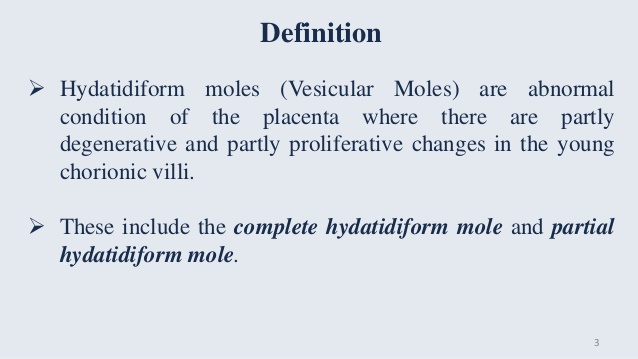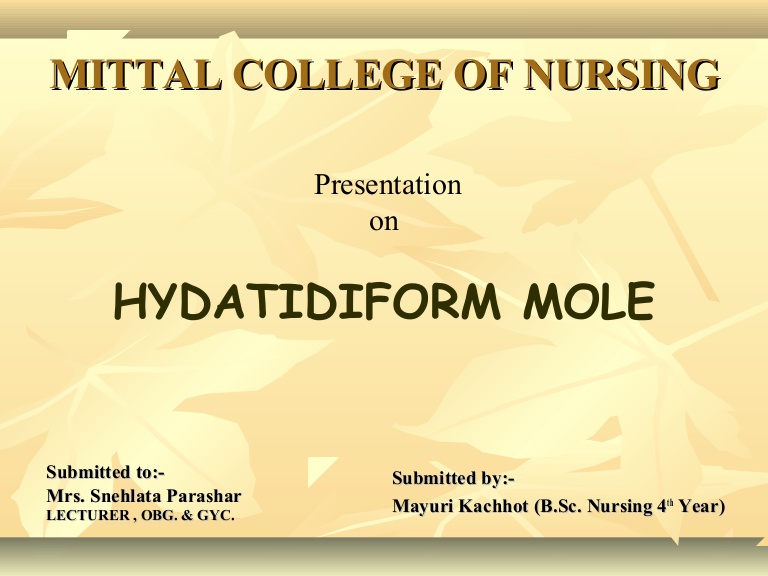
A molar pregnancy, also known as hydatidiform mole, is an extremely rare condition of pregnancy, which involves the abnormal development of trophoblast cells, the cells that normally form the placenta
There is also no permanent formation of fetal body tissue.
The abnormal development of these cells in the pregnant woman's body causes hydrocele, a large fluid-filled sac in the center of the uterus. This sac can become engorged with fetal fluid and blood, causing a bulge, called hydrocele. When this is present, it is referred to as hydatidiform moles.
If left untreated, hydatidiform moles will continue to grow until they reach the uterus or fallopian tubes. They are not dangerous. However, it is very common for pregnant women to experience pain, bleeding, and discomfort during pregnancy. Some of these symptoms may also be associated with symptoms of cysts, miscarriages, and infections, so a visit to your doctor is always advised.
Most cases of hydatidiform moles are benign. These moles do not cause harm to either the fetus or to the mother. Although, these conditions are extremely rare, there have been some reports of cyst formation from hydatidiform moles. If you have any concern for a possible cyst or miscarriage, make sure you go see your doctor immediately.
Because blistering is usually associated with possible cyst formation, many doctors may recommend that you have a hysterectomy to remove moles. However, hysterectomy is not always the best treatment option. A hysterectomy can cause complications such as prolapse of the uterus, which can lead to other complications such as ectopic pregnancy.
Hysterectomy can also cause scarring in the pelvic area, which is the main reason why so many patients choose hysterectomy in the first place. Because of this scar, some women choose not to have a hysterectomy, even though the condition can be very common. However, some patients want to get rid of the mole permanently.
Thus, a hysterectomy is the last option if your vesicoureteral mole does not go away on its own without treatment. Another option is to use a procedure known as hysterosalpingectomy, which involves removing the moisturizing gland. However, this is not as effective as a hysterectomy because the hydrating gland may be more difficult to find. If you don't want a hysterectomy, you may want to consider a hysterectomy and simply treat the mole naturally, such as using medicinal herbs.

While blistering moles can be a serious problem, don't worry because they are not harmful to your baby. In fact, if you can prevent them by following a few simple steps, you can get them under control.
A hysterectomy is a major surgical procedure that can be very expensive. You can minimize your risks by using natural bladder treatments, but this depends on how advanced your cyst is and whether the mole has spread to other parts of your body.
A hysterectomy can be a very risky operation, and many patients may have to undergo a series of procedures to completely get rid of the mole. This will involve surgical removal of moles followed by multiple procedures.
In order to keep them from coming back, some patients may need to undergo another hysterectomy. This can be more complicated than a simple removal and can require repeated surgeries. The procedure may also take longer, and the recovery time may be longer as well.
If you want to remove a mole and prevent it from coming back, you should try treating the mole naturally. Natural treatment methods include natural products like tea tree oil and vitamin E oil, which can help to shrink the mole and prevent it from coming back.